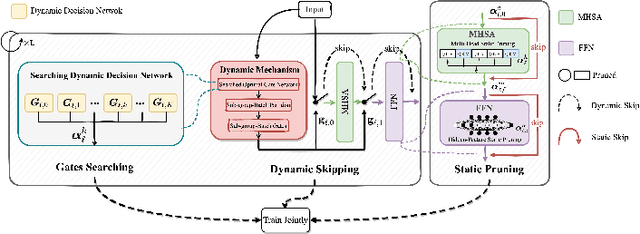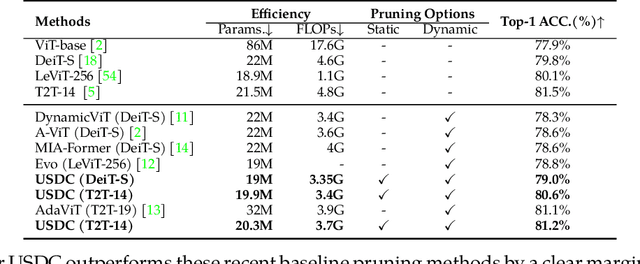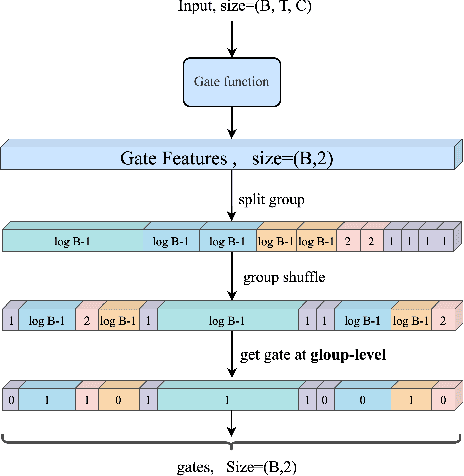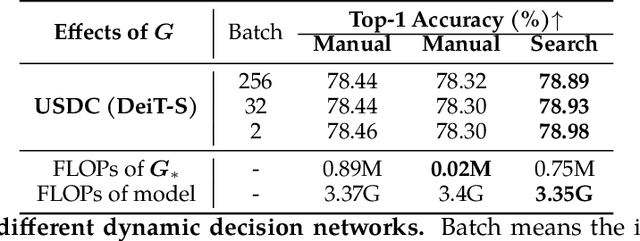USDC: Unified Static and Dynamic Compression for Visual Transformer
Paper and Code
Oct 17, 2023



Visual Transformers have achieved great success in almost all vision tasks, such as classification, detection, and so on. However, the model complexity and the inference speed of the visual transformers hinder their deployments in industrial products. Various model compression techniques focus on directly compressing the visual transformers into a smaller one while maintaining the model performance, however, the performance drops dramatically when the compression ratio is large. Furthermore, several dynamic network techniques have also been applied to dynamically compress the visual transformers to obtain input-adaptive efficient sub-structures during the inference stage, which can achieve a better trade-off between the compression ratio and the model performance. The upper bound of memory of dynamic models is not reduced in the practical deployment since the whole original visual transformer model and the additional control gating modules should be loaded onto devices together for inference. To alleviate two disadvantages of two categories of methods, we propose to unify the static compression and dynamic compression techniques jointly to obtain an input-adaptive compressed model, which can further better balance the total compression ratios and the model performances. Moreover, in practical deployment, the batch sizes of the training and inference stage are usually different, which will cause the model inference performance to be worse than the model training performance, which is not touched by all previous dynamic network papers. We propose a sub-group gates augmentation technique to solve this performance drop problem. Extensive experiments demonstrate the superiority of our method on various baseline visual transformers such as DeiT, T2T-ViT, and so on.
 Add to Chrome
Add to Chrome Add to Firefox
Add to Firefox Add to Edge
Add to Edge